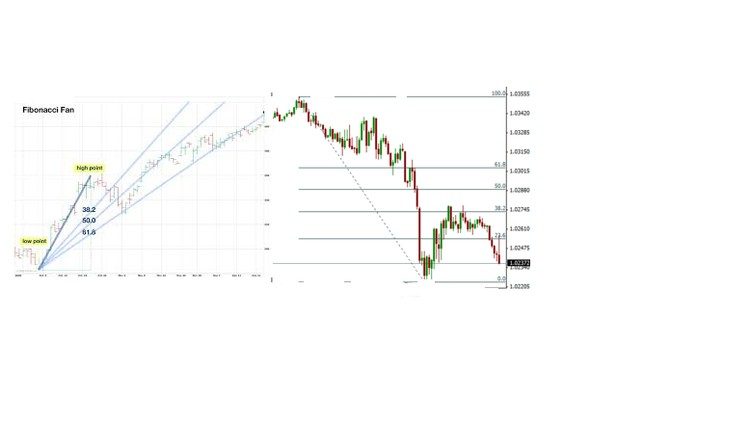



 Tech & IT
Tech & IT
 Business
Business
 Coding & Developer
Coding & Developer
 Finance & Accounting
Finance & Accounting
 Academics
Academics
 Office Applications
Office Applications
 Art & Design
Art & Design
 Marketing
Marketing
 Health & Wellness
Health & Wellness
 Sounds & Music
Sounds & Music
 Lifestyle
Lifestyle
 Photography
Photography
More Learnfly
Business Solution Become an InstructorStock trading is the buying and selling of company shares on stock exchanges. Traders aim to profit from price fluctuations by analyzing market trends, company performance, and economic indicators. It requires strategic decision-making and risk management in pursuit of financial gains.

By : Daksh Murkute
Master the fibonacci retracement tool and Take your Trading to the next level. Fibona...
4.3 75614
13 lectures All Level

By : Chandramouli Jayendran
Learn to trade in stock market using Price action, Option chain & Indicators. Learn t...
4.4 9846
9:25:59 hrs 115 lectures Beginner Level

By : Tawanda Irvine Makoni
Learn How To Trade using Supply & Demand. Retail mindset must fall. Learn to Trade Li...
4.2 74510
3:6:58 hrs 15 lectures All Level

By : Anurag Singal
How to Pick a Stock: Best Practices for New Investors...
4.8 58423
5:3:16 hrs 27 lectures Beginner Level












Learn more topics in various categories at one place. Explore unlimited courses in other categories and up-skill yourself today.

 Jazeb Akram
Jazeb Akram 4.2 770993 Beginner Level

 John Hedengren
John Hedengren 4.1 568920 All Level

 Ranjan Pandey
Ranjan Pandey 4.1 346620 All Level

 Muhammad Ahsan Pervaiz
Muhammad Ahsan Pervaiz 4.2 101198 All Level

 Pieter Vliegenthart
Pieter Vliegenthart 4.6 100802 All Level

 Jerome P.
Jerome P. 4.8 100701 All Level

 Vikas Munjal
Vikas Munjal 4.8 99949 Beginner Level

 Senol Atac
Senol Atac 4.9 99916 All Level

 Avinash A
Avinash A 4.8 99830 All Level

 Debasruta Chowdhury
Debasruta Chowdhury 6 Lectures Beginner Level

 Prabh Kirpa Classes
Prabh Kirpa Classes6 Lectures Beginner Level
.jpg)
 TechLatest .Net
TechLatest .Net8 Lectures Beginner Level

 Satyendra singh
Satyendra singh16 Lectures Beginner Level

 Satyendra singh
Satyendra singh11 Lectures Beginner Level

 Satyendra singh
Satyendra singh10 Lectures Beginner Level

 Satyendra singh
Satyendra singh10 Lectures Beginner Level

 Satyendra singh
Satyendra singh15 Lectures Beginner Level

 Satyendra singh
Satyendra singh10 Lectures Beginner Level

 Satyendra singh
Satyendra singh19 Lectures Beginner Level

 Satyendra singh
Satyendra singh32 Lectures Beginner Level

 Satyendra singh
Satyendra singh12 Lectures Beginner Level

 Satyendra singh
Satyendra singh18 Lectures Beginner Level

 Satyendra singh
Satyendra singh48 Lectures Beginner Level

 Satyendra singh
Satyendra singh31 Lectures Beginner Level

 Satyendra singh
Satyendra singh18 Lectures Beginner Level

 Dinesh Kumar (NISM Certified)
Dinesh Kumar (NISM Certified)19 Lectures Beginner Level

 Dinesh Kumar (NISM Certified)
Dinesh Kumar (NISM Certified)33 Lectures Beginner Level

 Dinesh Kumar (NISM Certified)
Dinesh Kumar (NISM Certified)37 Lectures Beginner Level

 Dinesh Kumar (NISM Certified)
Dinesh Kumar (NISM Certified)31 Lectures Beginner Level

 Dinesh Kumar (NISM Certified)
Dinesh Kumar (NISM Certified)34 Lectures Beginner Level

 Dinesh Kumar (NISM Certified)
Dinesh Kumar (NISM Certified)37 Lectures Beginner Level

 Dinesh Kumar (NISM Certified)
Dinesh Kumar (NISM Certified)45 Lectures Beginner Level

 Dinesh Kumar (NISM Certified)
Dinesh Kumar (NISM Certified)33 Lectures Beginner Level

 Nrupen Masram
Nrupen Masram24 Lectures Beginner Level

 Nrupen Masram
Nrupen Masram8 Lectures Beginner Level

 Nrupen Masram
Nrupen Masram15 Lectures Beginner Level

 Dinesh Kumar (NISM Certified)
Dinesh Kumar (NISM Certified)32 Lectures Beginner Level

 Nrupen Masram
Nrupen Masram12 Lectures Beginner Level

 Satyendra singh
Satyendra singh27 Lectures Beginner Level

 Satyendra singh
Satyendra singh15 Lectures Beginner Level

 Satyendra singh
Satyendra singh23 Lectures Beginner Level

 Dinesh Kumar (NISM Certified)
Dinesh Kumar (NISM Certified)43 Lectures Beginner Level

 Dinesh Kumar (NISM Certified)
Dinesh Kumar (NISM Certified)40 Lectures Beginner Level

 Amal mouna bouhlal
Amal mouna bouhlal27 Lectures Beginner Level

 Amir Rimer
Amir Rimer76 Lectures Beginner Level

 David Oisamoje
David Oisamoje13 Lectures Beginner Level
.jpg)
 David Oisamoje
David Oisamoje13 Lectures Beginner Level

 Daksh Murkute
Daksh Murkute12 Lectures Beginner Level

 Daksh Murkute
Daksh Murkute25 Lectures Beginner Level

 Daksh Murkute
Daksh Murkute9 Lectures Beginner Level

 Daksh Murkute
Daksh Murkute13 Lectures Beginner Level

 Chandramouli Jayendran
Chandramouli Jayendran115 Lectures Beginner Level

 Tawanda Irvine Makoni
Tawanda Irvine Makoni15 Lectures Beginner Level

 Anurag Singal
Anurag Singal27 Lectures Beginner Level
Stock trading involves buying and selling shares of publicly traded companies on stock exchanges. Traders aim to profit from price fluctuations in stocks by executing trades based on market analysis, trends, and other factors.
Stock trading is popular for its potential to generate returns and provide liquidity to investors. It offers opportunities for capital appreciation, dividends, and portfolio diversification. The stock market also plays a key role in capital allocation for businesses.
Main types include day trading (buying and selling within the same trading day), swing trading (holding stocks for a few days to weeks), and long-term investing (buying and holding for an extended period). Each approach has its own risk and reward profile.
Technical analysis involves studying historical price charts and trading volumes to predict future price movements, while fundamental analysis evaluates a company's financial health, management, and industry trends. Traders often use a combination of both methods to make informed decisions.
Risks include market volatility, economic uncertainties, and company-specific factors affecting stock prices. Traders may also face risks related to leverage, liquidity, and psychological factors. Risk management strategies are essential to mitigate potential losses.





